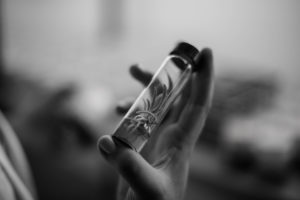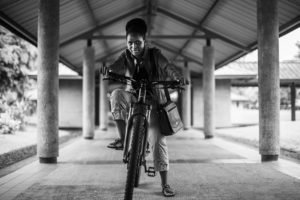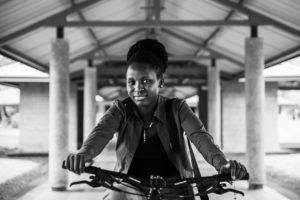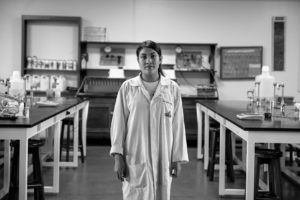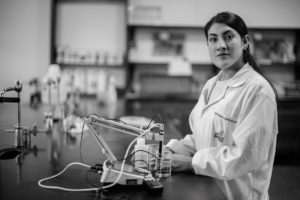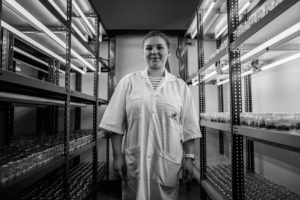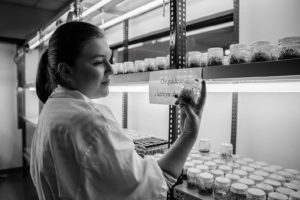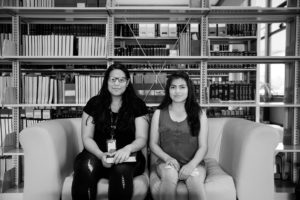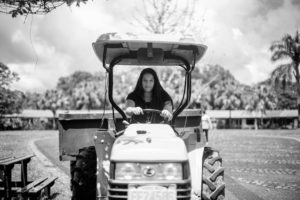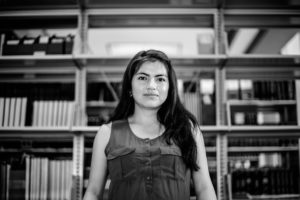Women and Science: Forging pathways
Times have changed. Women have achieved more freedom to innovate, research and create within the realm of science and technology. In April 2019, Katie Bouman succeeded in capturing the image of a black hole. World media called it an “impossible feat”. Bouman was only 29 years old when her laptop followed the algorithm she authored, beginning to sketch the yellows and oranges that formed a ring of dust and gas. The photograph of Bouman’s gleefully surprised face as she watched it all happen became as iconic as the black hole picture itself.
Everyone was talking about women in the world of science. People were comparing Bouman to the NASA scientist Margaret Hamilton, mentioning Bouman’s discovery in the same breath as Hypatia of Alexandria’s astronomical maps, Ada Lovelace’s instrumental computing algorithms, Jane Goodall’s discoveries about chimpanzees, and Marie Skłodowska Curie’s studies of radioactivity.
Women today have even more power to forge paths in industries that had once closed their doors to them. Like when, in October 2019, astronauts Cristina Koch and Jessica Meir conducted the first all-women spacewalk. Originally the walk had to be delayed by months – because the International Space Station lacked enough spacesuits in women’s sizes.
At EARTH University, hundreds of female agronomists-in-training are beginning to develop their skills in science and technology. Others have already graduated, becoming leaders of change in their home countries. They share common goals: achieving food security, combatting climate change, and building more sustainable, prosperous and just communities.
These are a few of those women, all from EARTH’s Class of 2020:
Grace Aguti (Uganda)
When Grace said she wanted to dedicate herself to agricultural biotechnology, people kept telling her that it was a career for men. She didn’t let that stop her. Four years ago, she traveled from Uganda to Costa Rica to study Agricultural Sciences at EARTH and to break all the stigmas that stood in her way. During her internship at Stellenbosch University in South Africa, Grace studied bean physiology to genetically improve the crop’s tolerance to persistent drought.
“In the future, I want to blend my knowledge of plant genetics and physiology with community development. I am interested in continuing to work on issues such as the drought tolerance of plants, genetic improvements and everything related to food security. I also want to work with small farmers to show them how they can increase their productivity and boost their quality of life.”
Tatiana González (Ecuador)
For her Graduation Project, Tatiana is developing a machine learning model that has the ability to determine and predict leaf nutrients. Since childhood, she has been insatiably curious about how things work. That’s why, since starting her studies at EARTH, she has pursued research. “I am passionate about biological control. In the future, I would like to have my own lab to research this. I would like to investigate new alternatives that can be given to the world, always with an environmentalist approach to crop inputs.”
She recognizes that, as a woman and a scientist, she has to generate more noise to make a name for herself. “There are countless women today who are working hard, making discoveries in science and technology, but they all remain unknown. We are often typecast in certain roles simply because we are women. We learn what men have done in history, but little is known about what women have done. It is up to us to challenge society’s paradigms. We have to show ourselves, to be present in this world where technology is advancing rapidly. We have to reach the highest summit.”
Fabiana Cruz (Costa Rica)
When Fabiana arrived at the laboratory in Santiago de Compostela, Spain, where she would do her professional internship, she was shocked to see that almost all of its researchers were women. In that lab, she was working with the micropropagation of plants and trees such as oaks and chestnuts. Currently, Fabiana works at EARTH’s Plant Tissue Lab where she is micro-propagating orchids. She believes that ‘doing science’ doesn’t have to mean reaching the moon or discovering a new galaxy. Science can be done from home, the classroom, the fields where crops are cultivated, wherever. But women must be present.
“Women are needed in all areas. We should not be limited in any way. We have all the capacity to do both new things and things that have already been done. We can create. We can be the ones who lead laboratories. We must be present in science, and we must be present in everything – not just in tidy places, looking ‘feminine’. We can do science in the field, dirty and muddy, like here at EARTH.”
Esnai Munthali (Malawi)
“What I like most about agronomy is the research.” Esnai traveled to the USA to intern at the University of Florida Research Center, where she analyzed the whitefly’s resistance to insecticides. She likes to learn about entomology because she understands that it can help her community. “In the future I would like to work on two projects: a pest management service to help farming families and a center to provide information and knowledge sharing about insects.”
Esnai says she feels ready for anything: to build and grow her own business; to complete her Graduation Project, focused on entomology; to finish her degree and become an example to other women and girls, empowering them as she has been empowered. Esnai believes in a world where smart solutions to challenges are genderless.
Joseline Rosero (Ecuador) and Cecilia Morocho (Ecuador)
Joseline and Cecilia are collaborating on their Graduation Project, in which they are using shrimp shells to absorb heavy metals (such as mercury and lead) present in residential wastewater. They are evaluating different dosages within the laboratory and in the field. “EARTH supports people’s ideas. It is one of the great features of the University. The lab doors are always open for us to do research. We practice in the field and have many alternative spaces to learn. This allows us to test the feasibility of our ideas and get good results. We also have professors who are advisers and always push us to innovate,” Joseline says.
Both students acknowledge the importance of their knowledgeable contributions and believe in the potential of other women. “We think that to motivate more women and girls to work in science and technology, we have to start with ourselves, change what we have to change and empower ourselves to set a good example for others. We must also share our knowledge, whether a little or a lot, so that we can help each other. It is important to get out of the cities and get closer to rural women.”
On our campuses, hundreds of women have been prepared to forge their own ways in agronomy, science and technology. They leave behind footprints that future cohorts can follow, until they too decide to diverge and chart their own paths.
At EARTH, we firmly believe in the immense potential of every woman who is part of our institution, including those who have already passed through our campuses and those yet to arrive. We are inspired by those who photograph black holes, walk through space, fight for food security, invent new algorithms, and nurture their communities. We promise to be an engine that empowers young leaders to never stop, to reach the highest mountain, to create intelligently and unendingly.

